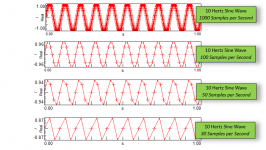My first computer exposure was a G-15 as well. Then CDC 7200's before working at a computer manufacturer in the 1970's. We cut rubylith for processors and memory on the top floor, turned the ruby into masks and made chips (oves etc.) on the bottom floor and assembled computers from raw CRT's and blank PCB's to finished products on the main floor. Working in the engineering group I learned a lot about all the processes.
Now that location was Apple's headquarters for many years. Not nearly as interesting.
Its a fallacy that you design with Spice. You no more design with spice than with a pencil. You think through the problem, imagine a solution, and then either capture it on paper or on a computer. And going from a spice simulation to a final perfect product just doesn't happen in the real world. It does save a lot of time and helps with the troubleshooting a lot.
My one meeting with Barrie Gilbert, at a sort of trade show, he explained that spice enabled him to understand aspects of a circuit that could not be checked any other way. However the original design of the circuit predated any spice analysis.
Now that location was Apple's headquarters for many years. Not nearly as interesting.
Its a fallacy that you design with Spice. You no more design with spice than with a pencil. You think through the problem, imagine a solution, and then either capture it on paper or on a computer. And going from a spice simulation to a final perfect product just doesn't happen in the real world. It does save a lot of time and helps with the troubleshooting a lot.
My one meeting with Barrie Gilbert, at a sort of trade show, he explained that spice enabled him to understand aspects of a circuit that could not be checked any other way. However the original design of the circuit predated any spice analysis.
Member
Joined 2009
Paid Member
Of course I get it. I have LT SPICE as well as MicroCap installed on a PC that I rarely turn on. I just can't get into it, I am just too busy designing audio products to spend more time with the simulators.
John, I hope you don’t feel embarrassed. You know, my mother doesn’t do well with modern technology either and that’s fine, she still enjoys her life. 😀
p.s. +1 for B. Gilbert
Last edited:
I seldom use a PC, but I do use my Apple computers, especially my iphone, or the two desktops in my living room. I just don't design with SPICE.
John,
If there is any consolation I don't use spice either.................😀
Jam
If there is any consolation I don't use spice either.................😀
Jam
Attachments
Last edited:
Demian,
A G15, with the high speed Baudot optical paper tape reader! Boy you must be old!!! 😉
A G15, with the high speed Baudot optical paper tape reader! Boy you must be old!!! 😉
We appear to have a rabid fanboy in the house!
Right no cure, as I said just like USENET MAC's are for those that want to know nothing about the technology they use.
Pro Tools was mentioned a few posts back. As a package it seems to get singled out for a lot of venom from one group of old hands in the music industry for the disruptive effect it had. Odd thing is as far as I can tell real Pros use Cubase.
So pop quiz: Has the rise of the DAW made music better or worse? I discovered this evening that Garbage was possibly the first album mixed in pro tools. Personally I quite like that album (which will probably be to Scott's horror 🙂 ).
So pop quiz: Has the rise of the DAW made music better or worse? I discovered this evening that Garbage was possibly the first album mixed in pro tools. Personally I quite like that album (which will probably be to Scott's horror 🙂 ).
(which will probably be to Scott's horror 🙂 ).
You guessed it. To be fair I assume the name says it all in this case.
Then all these must be amateurs. 😀Odd thing is as far as I can tell real Pros use Cubase.
Studio 1 - AIR Studios
Studio One - Abbey Road Studios
(see under Control Room)
Universal Studios Lot | Our Facility
(I see white Apple keyboards all over the place. Must be a bunch of fanboys 😉 )
Last edited:
If there is any consolation I don't use spice either.................😀
The Spice Girls just make me feel even older. Children with breast implants - totally creepy.
All good fortune,
Chris
Handsome young dude looking rightfully proud of his machine!
Well Done, Hans!
Howie
My Y chromosome is Dutch, but I didn't get the looks _or_ the brains. Statistics can be a beotch.
All good fortune,
Chris
All good fortune,
Chris
First computer I used was a ...
An IBM 360. AlgolW and assembly language using punchcard. Some List and PL1 too using those antique paper terminals.
dave
1972. 1st year university. My 1st programming prof was one of the guys that developed AlgolW. Otherwise it probably would have been FOrtran (i did a bit of that too).
dave
dave
My First computer was a Z80 based machine that I had to assembly myself (supplied by some UK company - can’t remember the name) in about ‘78 or ‘79 IIRC. 1k of RAM, programming in assembler. Later I got a Dragon which was 6809 based and programmed in Basic. I never really got the computer bug. For me it was just a tool to do stuff with. In ‘87 I got my first PC - a 386 machine with 64 k RAM and a 10 MB HD and a 51/4 floppy plus 3.5 (stiffy) (yeah, that’s what we called them) and got to run word processor programs, Lotus123 and even an early version of Orcad.
Each paragraph is from a separate source of info.....

Figure 2: In the top graph, the 10 Hertz sine wave sampled at 1000 samples/second has correct amplitude and waveform. In the other plots, lower sample rates do not yield the correct amplitude nor shape of the sine wave
To get close to the correct peak amplitude in the time domain, it is important to sample at least 10 times faster than the highest frequency of interest. For a 100 Hertz sine wave, the minimum sampling rate would be 1000 samples per second. In practice, sampling even higher than 10x helps measure the amplitude correctly in the time domain.
The key to understanding how this "magic" works is to realize that most signals of interest to a user are periodic. That is, they a have fixed wave shape and they repeat (CW).
that a waveform must be sampled at a rate that is at least
twice the highest expected frequency in the signal under
test. However, this theory only applies to periodic sinusoidal signals.
Today’s complex waveforms undoubtedly require higher than
2X sample rate multipliers to accurately capture changing or
single-shot events.
captures the entire waveform between two successive trigger events. Thus, even if the waveform is non-repetitive, the acquisition will be complete. (A repeating waveform is not required in real-time sampling.)
Your choice of sample rate depends upon the type of information you are interested in and the known attributes of your signal such as type and expected frequency.
To accurately measure the frequency of a signal, you need a sample rate of at least twice the highest frequency component in the signal. This concept is known as Nyquist's theorem.
To analyze the shape of the signal, you will need a sampling rate of at least ten times higher than the highest frequency component in the signal. In the equation above, you would divide by 10 instead of 2.
THx-RNMarsh

Figure 2: In the top graph, the 10 Hertz sine wave sampled at 1000 samples/second has correct amplitude and waveform. In the other plots, lower sample rates do not yield the correct amplitude nor shape of the sine wave
To get close to the correct peak amplitude in the time domain, it is important to sample at least 10 times faster than the highest frequency of interest. For a 100 Hertz sine wave, the minimum sampling rate would be 1000 samples per second. In practice, sampling even higher than 10x helps measure the amplitude correctly in the time domain.
The key to understanding how this "magic" works is to realize that most signals of interest to a user are periodic. That is, they a have fixed wave shape and they repeat (CW).
that a waveform must be sampled at a rate that is at least
twice the highest expected frequency in the signal under
test. However, this theory only applies to periodic sinusoidal signals.
Today’s complex waveforms undoubtedly require higher than
2X sample rate multipliers to accurately capture changing or
single-shot events.
captures the entire waveform between two successive trigger events. Thus, even if the waveform is non-repetitive, the acquisition will be complete. (A repeating waveform is not required in real-time sampling.)
Your choice of sample rate depends upon the type of information you are interested in and the known attributes of your signal such as type and expected frequency.
To accurately measure the frequency of a signal, you need a sample rate of at least twice the highest frequency component in the signal. This concept is known as Nyquist's theorem.
To analyze the shape of the signal, you will need a sampling rate of at least ten times higher than the highest frequency component in the signal. In the equation above, you would divide by 10 instead of 2.
THx-RNMarsh
Last edited:
You guessed it. To be fair I assume the name says it all in this case.
I figured Butch Vig might at least have a few punk points with you 🙂.
Btw saw on news Genesis P has died.
The AIR installation must be recent as last year studios 3 used something completely different. But I'll take your 3 studios and raise you
Steinberg Cubase - Wikipedia
But I'll take your 3 studios and raise you
How many on the list paid for it?
...and why aren't they using Steinberg Nuendo, the professional big brother of Cubase? Nuendo: Premium Audio. For Professionals | Steinberg
- Home
- Member Areas
- The Lounge
- The Black Hole......
